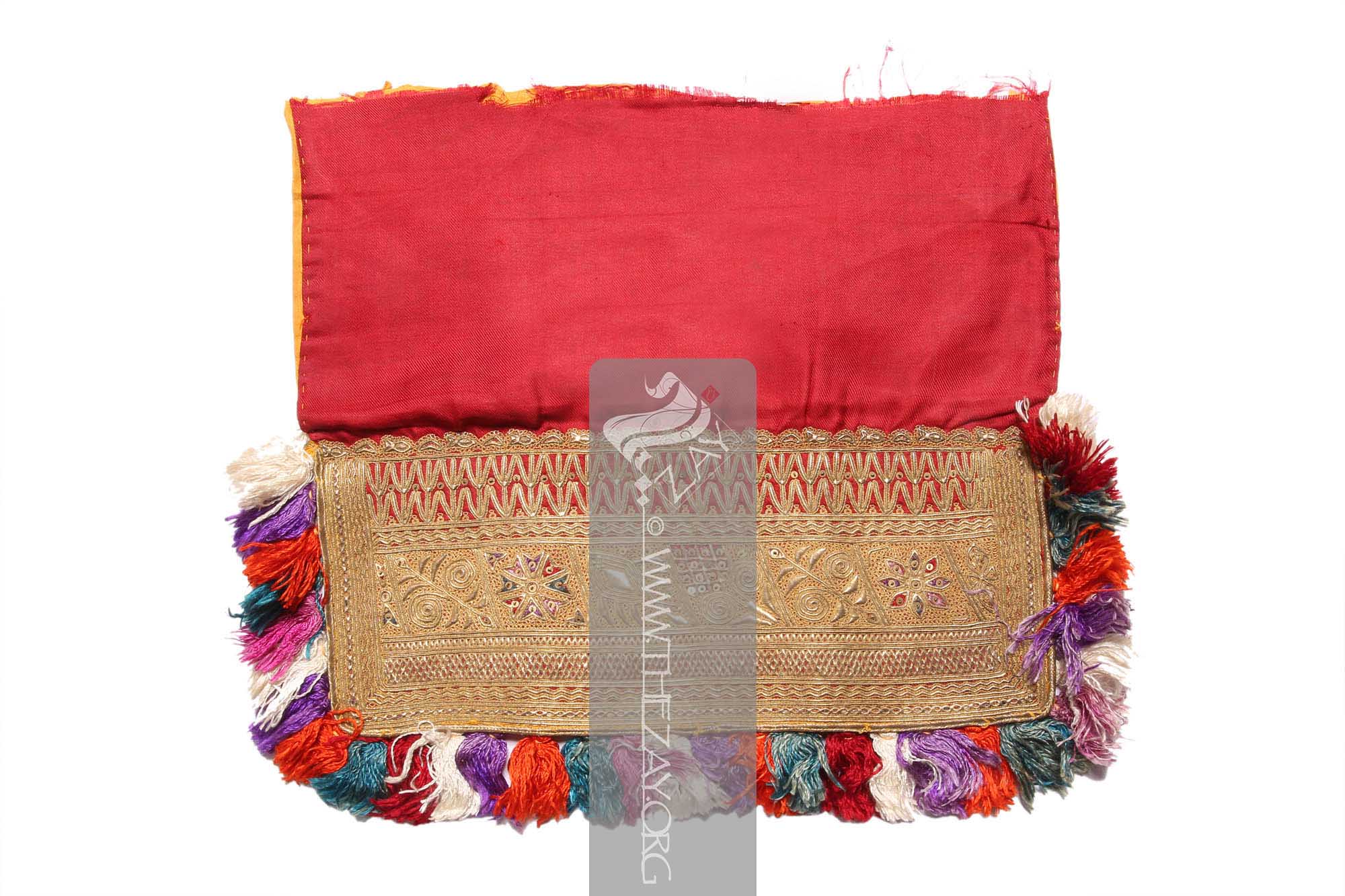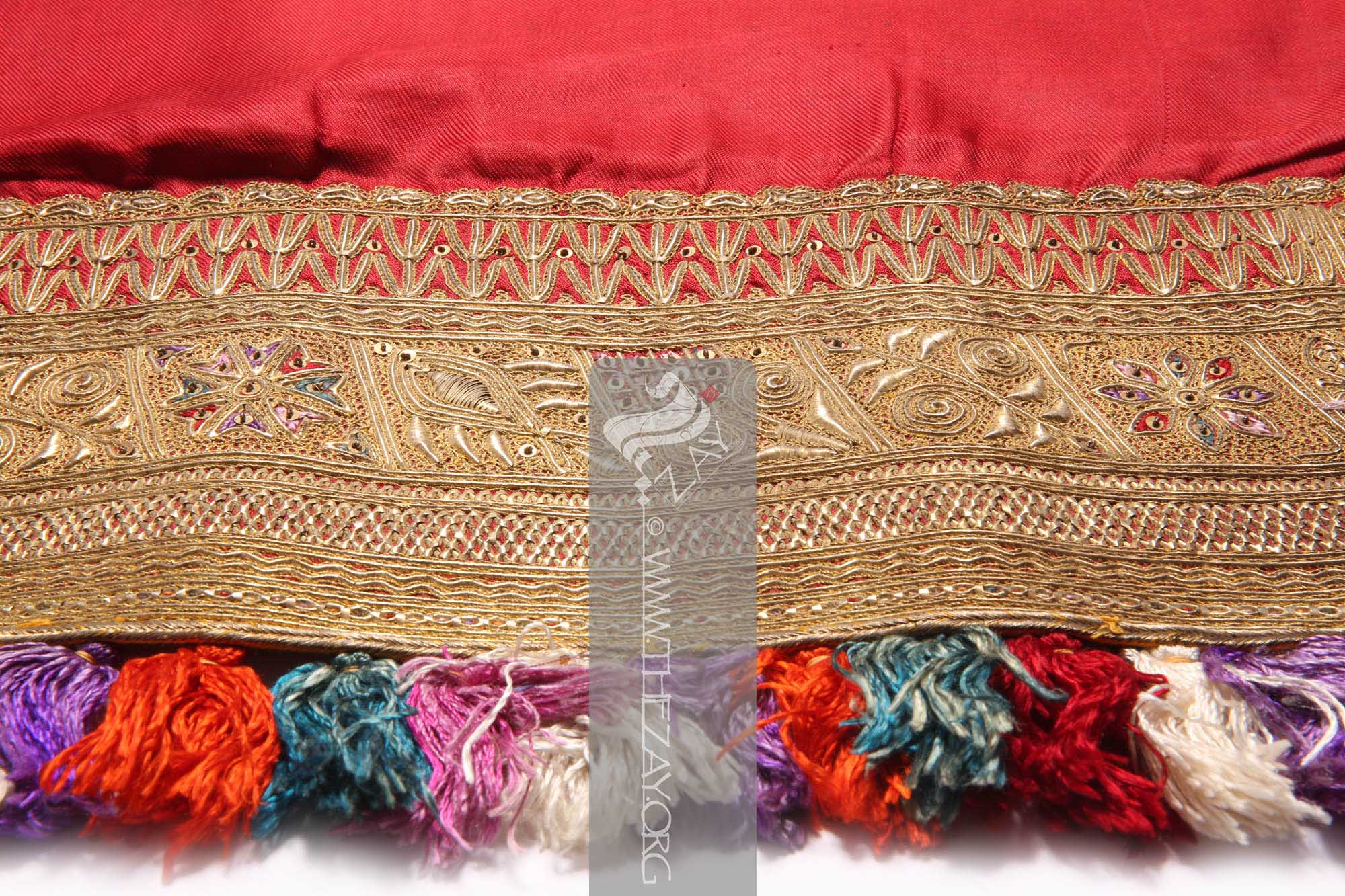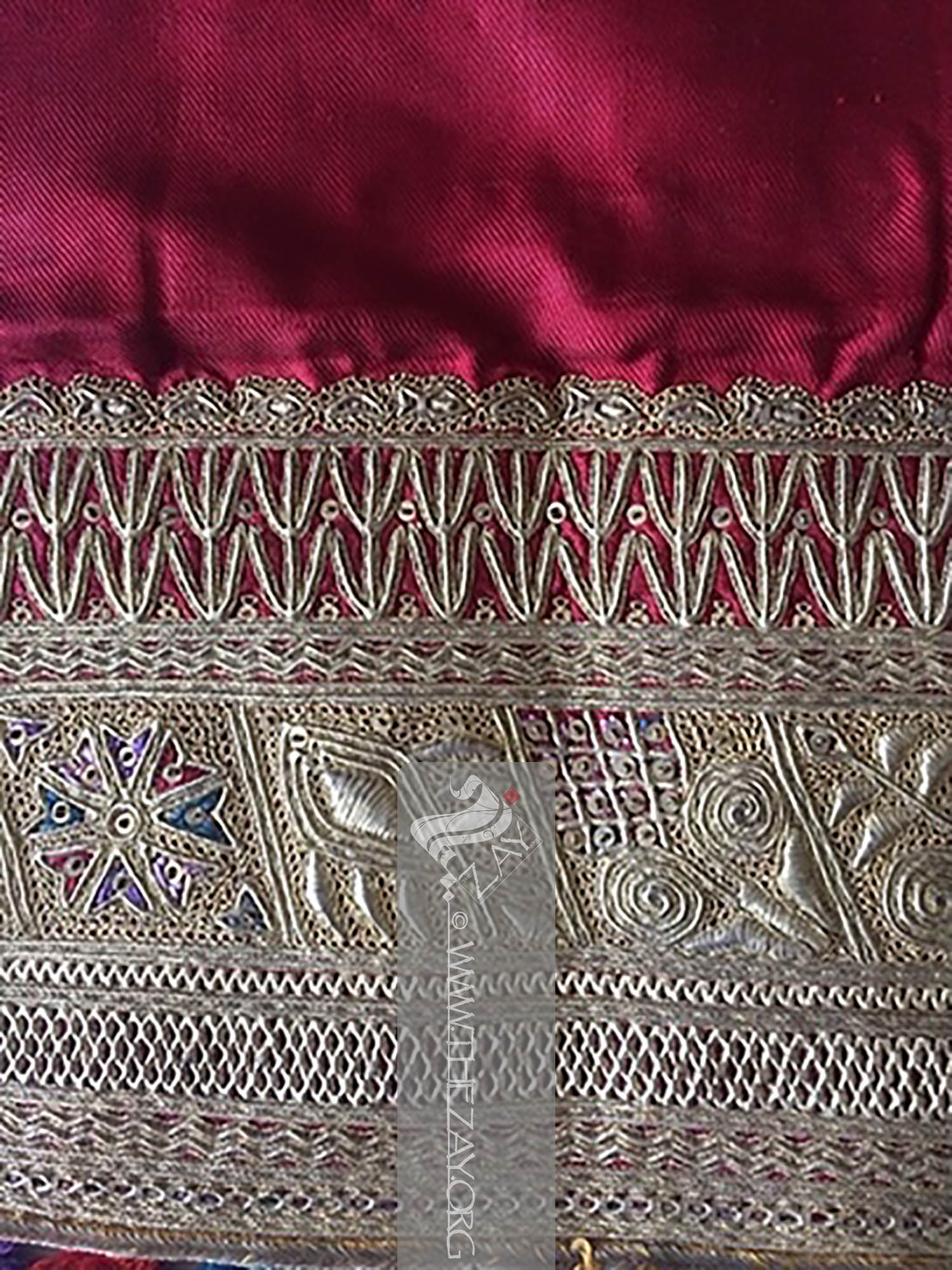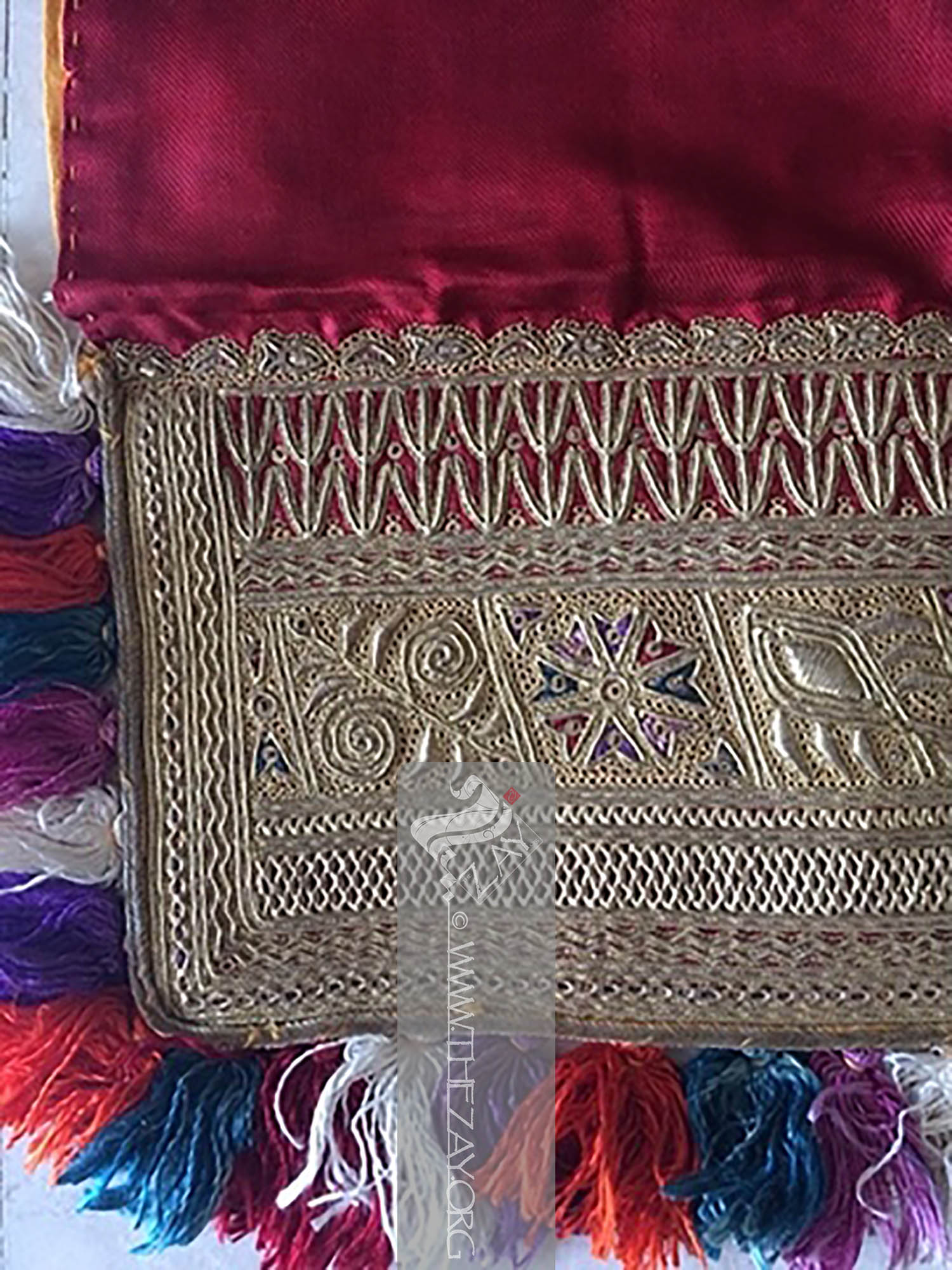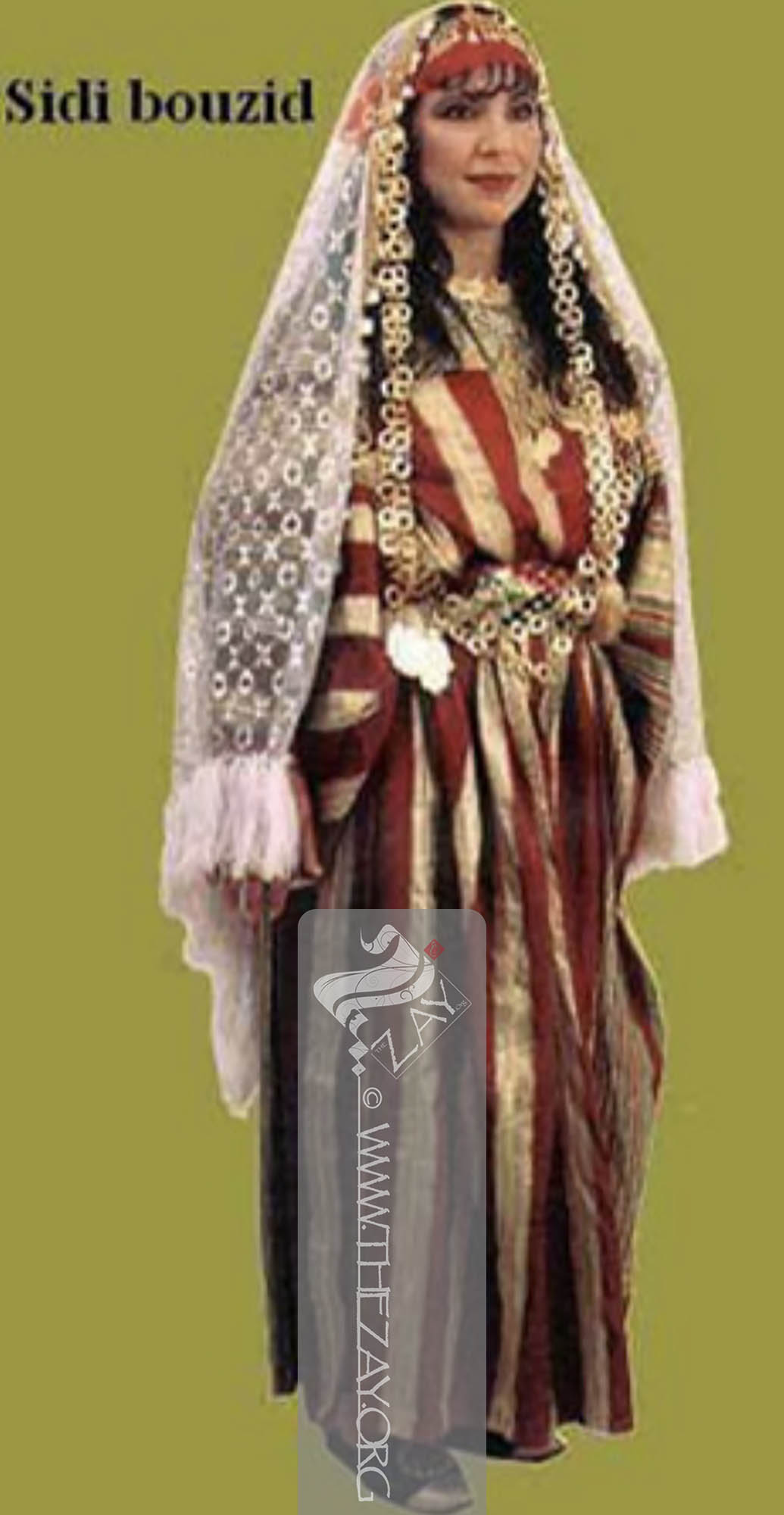Embroidered headwear with zari - Tunisia
| Local Name | Fawqiya |
| Object Category | Headwear |
| Gender | Female |
| Date of object | 1960 |
| Place Of orgin | Tunisia |
| Region | Mahdia |
| Object Range | Tunisia |
| Dimensions | Length: 37 cm, Width: 45 cm |
| Materials | Silk |
| Technique | Hand Stitched Hand Embroidered |
| Color | |
| Motif | Arabesque Floral |
| Provenance | Purchased, Alaa Eddine Sagid |
| Location | The Zay
Zay: (Arabic: costume, Pl. azyaā’), a set of clothes in a style typical of a particular country or historical period. Initiative |
| Status | In storage |
| ZI number | ZI2018.500473.1 TUNIS |
Object features
This headwear (fawqiya) dates to the 1950s and 1960s, and was typically worn as a decorative accessory by the Mahdian bride. It is hand-stitched in burgundy silk divided into two halves. The upper half is plain, and the lower part is embroidered with gold thread. This embroidery features a central area containing six small panels filled with flora and fauna motifs, bordered by more gold embroidery in geometric patterns and straight lines. The piece is surrounded by orange, turquoise
Turquoise: (French: turquois – present day Türkiye; Synonyms: firuze
Firuze: (Persian: pērōzah – "victory", later Arabic: fayrūz; Synonyms: firuze, pheroza), is a naturally occurring opaque mineral mined in abundance in Khorasan province of Iran and has been used for making dye for centuries. , pheroza), is a naturally occurring opaque mineral mined in abundance in Khorasan province of Iran and has been used for making dye for centuries. The term is a derivative of the French word for the country Türkiye once called Turkey. , lilac, purple, and white silk thread forming tassels over the forehead and sides.
Fawqiya were not usually worn by girls before their marriage, nor by women after the age of fifty.




